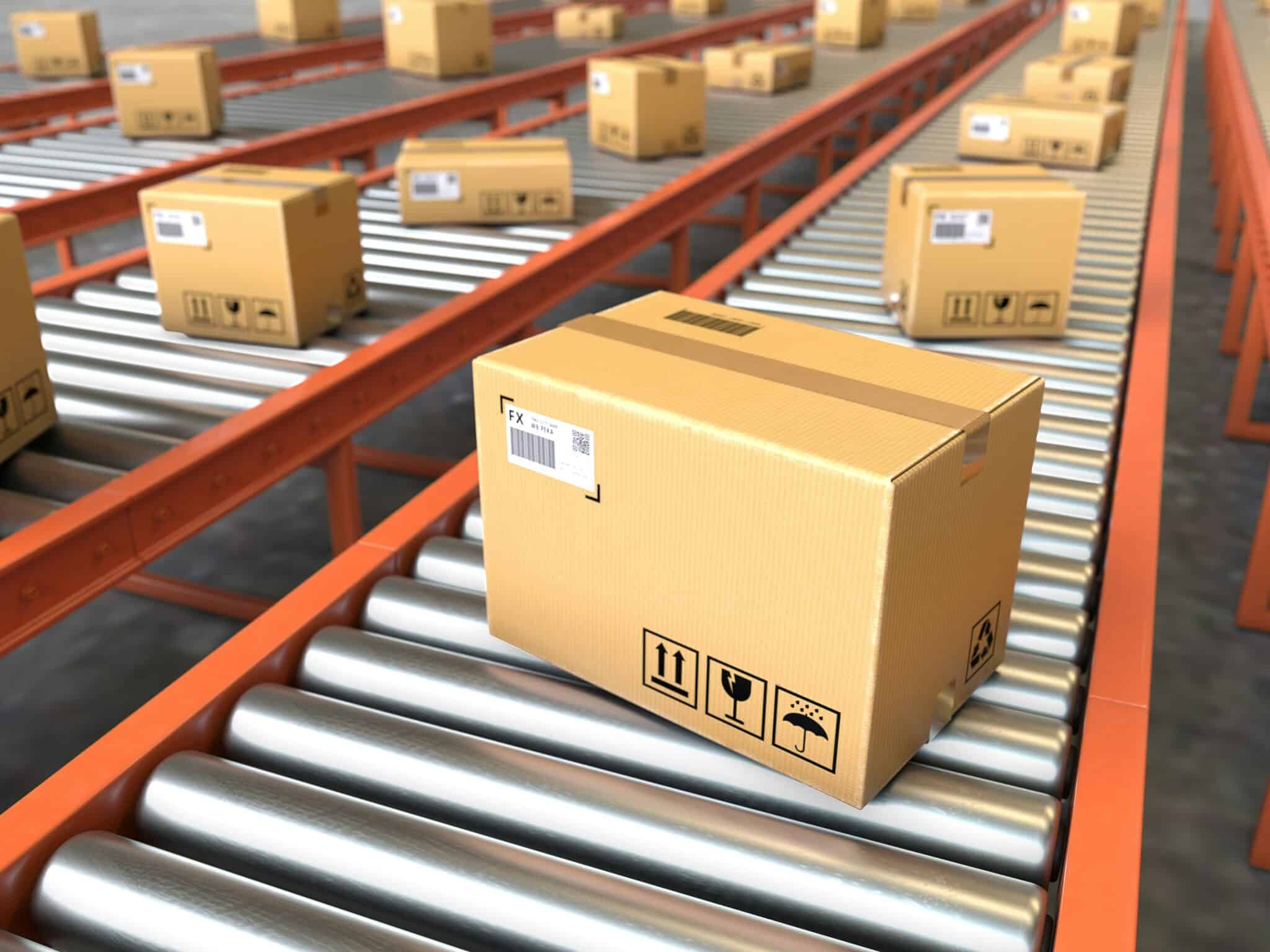Så din virksomheds forsyningskæde skal opgraderes? Er du i gang med at undersøge muligheder, afgrænse krav og bestemme dine bedste muligheder? Implementering af en ny supply chainmanagement-software til din virksomhed involverer meget mere, end du måske forventer, og der er flere spørgsmål, som du skal besvare, for at denne implementering kan lykkes.

Data, data, hvorfor er du data?
Spørgsmål 1: Hvor er dine data, og hvordan håndteres de?
Jeg tror, at alle forstår, hvor vigtige data er, især i vores stadig mere teknologiske verden, hvor vi har adgang til tilsyneladende uendelige datakilder. Vi ved alle, at vi har brug for lagerniveauer for at være nøjagtige, for at vide, hvad vi har solgt, hvor risiciene ligger for at undgå lagerudsalg, undgå at blive overfyldt – listen er næsten uendelig. Hvad der ikke forstås så ofte, eller måske mere præcist, hvad der undervurderes, er vanskeligheden ved at administrere disse data:
- Dataindsamling: Hvor er det hele? Eksisterende systemer, e-mails, PDF-filer, regneark, folks hoveder, på papir, hos leverandørerne? Findes det overhovedet
- Indlæsning af data: Interagerer de forskellige ERP-driftsplatforme effektivt og kommunikerer data korrekt? Gør det forkert med forkerte data, der kommer ind, og du vil have forkerte data, der kommer ud.
- Datavedligeholdelse: Hvem opdaterer det og hvor ofte? På hvilke områder kan vi indføre automatisering for at forbedre processerne? Når du har tusindvis af live-elementer på tværs af flere steder, kan opgaven med at gennemgå og opdatere være enorm.
- Operation: Er dataene tilgængelige? Er det i det rigtige format (og opdateret), eller skal vi anvende yderligere målinger for at sikre bedste praksis-resultater for at optimere vores forsyningskæde?
At have en stor mængde data i din virksomhed og stadig bruge excel til at huse alle disse data kan virkelig bremse din forretningsdrift. Excel-arkene taler ikke med hinanden, og det kan være vanskeligt at få tal til at matche på tværs af hele virksomheden. For eksempel kan du have en merchandiser, der taler med en køber, der taler med en finansiel planlægger, der taler med e-handel, og alle disse mennesker, der arbejder på forskellige excel-ark, skal have de samme tal. Derfor er dynamiske systemer som AGR, der huser dine data og opdaterer dem automatisk, afgørende for din forretningsdrift, da de sikrer, at alle ser på de samme tal.
Forretningsprocesser og bedste praksis
Spørgsmål 2: Har du et tilstrækkeligt overblik over din forretningsdrift, og følger du best practice-processer?
Implementering af et nyt system betyder, at du skal forstå, hvad dit nuværende systems muligheder og begrænsninger er, samtidig med at det gør det vigtigt at forstå og kortlægge alle processerne i din virksomhed og forstå, hvorfor du gør de ting, du gør.
Vi bliver ofte spurgt af nye kunder “Hvorfor gør AGR-systemet det?”, og selvom dette er et gyldigt spørgsmål, skal kunden også spørge sig selv: “Hvorfor gør vi dette, og hvorfor anvender vi disse beregninger? Hvorfor skulle vi gøre dette fremadrettet?” Når du implementerer et nyt system, hvis du ikke kan svare på, hvorfor din virksomhed udfører deres forretningsdrift på en bestemt måde (det vil sige – et bedre svar end “Sådan har vi altid gjort det.”), så går implementeringen måske ikke så glat, som du håbede. Det er vigtigt at have svarene på disse spørgsmål.
Implementering af en ny supply chain managementsoftware til din virksomhed betyder også implementering af nye forretningsprocesser, der følger med denne software. AGR-softwaren er udviklet baseret på best practice-processer inden for forsyningskæden, så det er vigtigt at være klar til både en opgradering af systemer OG processer.
Teamwork får drømmen til at fungere
Spørgsmål 3: Er dit team parat til at begynde at bruge et nyt system/et nyt sæt processer?
For at implementeringen kan gå glat, er det afgørende for dens succes at få opbakning fra det team, der skal bruge den nye software, og forstå dine medarbejdere i teamene. Hvis dit team ikke forstår vigtigheden af at opgradere både systemerne og processerne i din forsyningskæde, kan sandsynligheden for, at de fuldt ud udnytter den nye software og giver slip på excel-arkene, være sværere, end du tror.
Det kan være nyttigt for dig at tænke på dine medarbejdere og finde ud af, hvor de passer ind i fem hovedgrupper:
- Innovatører. Det er teknologientusiaster af natur, og de er spændte på at dykke ned og finde ud af, hvordan den nye software kan forbedre deres eksisterende arbejdsgange.
- Tidlige brugere. Ligesom innovatører vil disse brugere prøve ny software hurtigere end flertallet. Det er afgørende at få opbakning fra denne gruppe, fordi deres meninger påvirker, hvordan det tidlige flertal har det med at prøve det nye værktøj.
- Tidligt flertal. Denne gruppe er mere praktisk i deres tilgang til ny software. Det tidlige flertal venter typisk, indtil software er undersøgt af andre. De vil gerne vide, hvordan ny software forbedrer deres eksisterende arbejdsgang, før de føler sig trygge ved at tage den i brug.
- Sent flertal. Disse brugere vil kun tage ny software til sig, når de har brug for det, eller når det bliver urimeligt ikke at gøre det. Det sene flertal vil bruge softwaren, når du har gjort den til en konkret del af din forretningsdrift.
- Efternølere. Efternølere har en tendens til at bruge velkendt teknologi og software, så længe de overhovedet kan. De er ofte ubehagelige ved at lære og bruge nye værktøjer. Den eneste måde at flytte denne gruppe på kan være at tvinge dem til at bruge den nye software ved at fjerne ældre muligheder.
At forstå disse brugertyper vil hjælpe dig med at tænke strategisk over din udrulningsplan, og hvordan den kan påvirke hver af disse fem grupper.
Hvis du kan opbygge nok momentum med Early Adopters, for eksempel, vil det være lettere at overbevise Early Majority.Og når Early Majority adopterer din nye software, vil du være godt på vej til at få resten af dit team om bord. At få dit team ombord vil hjælpe softwareimplementeringen med at gå mere problemfrit end nogensinde.
Det er også vigtigt at huske påimplementering af et nyt system, der også vil foretage ændringer i din forretningsproceskræver meget tid og dedikation. At have en dedikeret medarbejder eller superbrugere til at følge denne implementering ville være et stort skridt i retning af at hjælpe overgangen til at gå glat.
AGR Dynamics er her for at hjælpe
Som tidligere nævnt har vi hos AGR Dynamics udviklet vores supply chain-software til at følge best practice-processer, og gennem vores Rapid Results-implementeringsmetode er vi her for at hjælpe dig med at opgradere dine systemer og processer og hjælpe din virksomhed med at få succes. Med over 150 kunder, der bruger AGR-softwaren i over 2500 butikker over hele verden, har vi stor ekspertise i at hjælpe dig med at reducere dit lager og øge dit serviceniveau. Med AGR-softwaren kan du reducere op til 80 % af det manuelle arbejde i din forretningsdrift og sige farvel til at udmærke dig én gang for alle.
Hvis du gerne vil vide mere om vores AGR-software til styring af forsyningskæden, så tøv ikke med at kontakte os og anmode om en demo.





